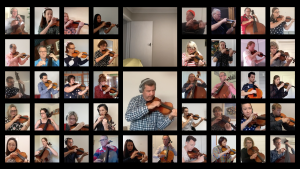Keene on Bruckner
09.04.2020
“Bruckner is polarising as to whether his music is loved or abhorred; whether he is a miraculous genius, or the most boring composer of all time. People often hear Bruckner and struggle to understand why his music is so amazing.”
While Bruckner‘s main body of work consists of his symphonies which are all over one hour long, John believes this is where the beauty lies, “With the structural arch that he develops, as well as the organ-like textures that Bruckner bases his symphonies on.”
John recommends trying to listen to Bruckner holistically, not in individual parts, “It might come across as more beautiful - just like a pillar in a cathedral may on its own seem like a simple piece of cement up close, but the cathedral itself is an inspiring piece of architecture.”
Bruckner and John both played organ, giving John a special resonance with the sound, “You can hear how his symphonies build up organ-like textures, and switch suddenly from very soft to very loud, just like an organ would in switching manuals (keyboards) or changing stops. The majesty of the organ-like sound-world comes across wonderfully in his music.”
John says Bruckner’s bass parts are unique compared to those from other composers, “They are very challenging which makes playing his works fun and enriching!”
Favourite Bruckner work: Symphony No.9
“My favourite moment is between the ending of the first movement (it will remind you of The Lord of the Rings) and the final forte chord in the 3rd movement about five minutes before the end, a poly chord of F# minor 7 and G# major 6 where several of those notes clash with each other causing a painful and strained effect in the music, almost signifying Bruckner’s last attempt at crying out for meaning at the end of his life.”
With John's view in mind, why not take another listen to Bruckner with WASO's recording of Symphony No.8 at https://abcmusic.lnk.to/WASOlivePR
